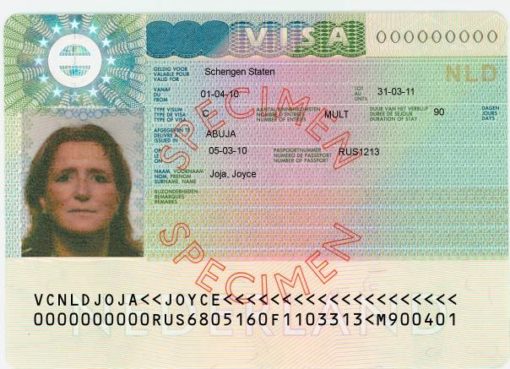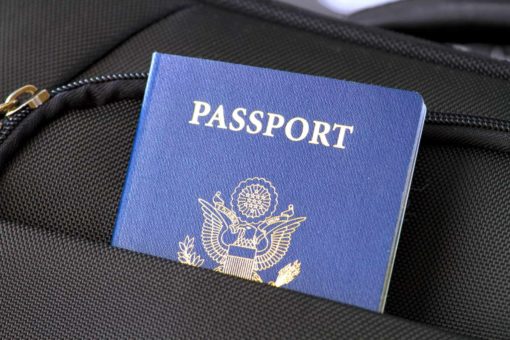Have you decided to visit the most iconic tourist attractions in Europe?
Would you like to explore Paris, Rome, Prague, and other beautiful capital cities in Europe?
Then, the first step you must take to enjoy a once-in-a-lifetime experience is getting a Schengen Visa to enter the Schengen States.
Without a valid Schengen Visa, you won’t be allowed to cross any Schengen Member State external borders and enter the Schengen Zone.
Before getting comprehensive information concerning your Schengen Visa application process (e.g., conditional requirements, mandatory travel documents, means of subsistence test, where and when to apply, etc.), you should first answer the following questions:
“What is a Schengen Visa?” and “How to use a Schengen Visa to pass through border controls?“.
Table of contents:
1. Visa For Schengen Area & European Union – Definition

Image source: https://ec.europa.eu
A Schengen Visa is an authorization that allows you to enter, remain within, and leave the 27 Schengen countries (not just a single Schengen country) for a specific period.
The Schengen Agreement and Europe Visa policy allow you to enter and travel freely within any Schengen state-member, meaning that once you enter the Schengen Zone, you can cross the borders of the other member-states without going through identity checks.
A Schengen Visa also enables you to leave the Schengen Area from any of the member states.
The Schengen Member States you can enter using a Schengen Visa are: Austria, Belgium, Croatia, Czech Republic, Denmark, Estonia, Finland, France, Germany, Greece, Hungary, Iceland, Italy, Latvia, Liechtenstein, Lithuania, Luxembourg, Malta, Netherlands, Norway, Poland, Portugal, Slovakia, Slovenia, Spain, Sweden, and Switzerland.
De facto, the Schengen Area also includes Monaco, San Marino, and the Vatican City, which are microstates that maintain open borders with the Schengen countries.
Furthermore, a Schengen Visa enables you to enter some countries (EU and non-EU) that are not part of the Schengen Area, such as Bulgaria, Cyprus, Romania and even Mexico or Colombia.
If you need the complete list of the non-Schengen countries you can enter with a Schengen Visa, please check out this link.
A Schengen Visa includes limits on the dates you may enter the Schengen Zone, number of entries, and duration of stay.
A short-stay Schengen Visa (whether it is a single-entry, double-entry, or multiple-entry Schengen Visa) allows you to spend up to 90 days in the Schengen Area Countries over a 180-day period of time.
Only a type-D National Visa enables you to spend more than 90 days in the Schengen Zone and get a national residence permit.
Essentially, a Schengen Visa is a sticker that the Visa officers will glue into your passport in case your application gets approved.
The Visa sticker must include your full name and other details relevant to your trip. For example, it should indicate your Visa validity’s starting and ending date, where the Visa was issued, the number of days you are allowed to spend within the Schengen Area, travel purpose, etc.
To learn more about the information on your Visa sticker, please visit this link.
Important note: Not all travellers need a Schengen Area entry Visa. Please check out the table provided in this post to determine whether you need a Visa to enter Europe.
2. How Does A Schengen Visa Work?

When crossing the borders into your destination country (the Schengen state you enter first), you must use your Schengen Visa to get through border controls.
The immigration authorities must pre-screen you before allowing you to enter the Schengen Zone.
In other words, the border control authorities will scan your Visa to ensure that it is authentic.
They will also ask you to provide relevant documents concerning your trip, such as your travel insurance, flight tickets, proof of accommodation, etc.
Before allowing you to enter the Schengen Area, the border and immigration officers will access the Visa Information System (VIS).
The VIS is a central IT system that connects Schengen Embassies and Consulates worldwide with border crossing points of Schengen states.
The immigration officers will check the biometric data the Visa agents have stored in the VIS during your Embassy appointment. They will perform biometric data matching to determine your identity.
If your biometric data matches, the VIS will confirm your authentication, and the immigration officers will allow you to enter the Schengen Area.
However, please note that a Schengen Visa does not always guarantee your entry into the Schengen Area.
The border control authorities can also ban you from entering the Schengen Area (even though these are not very common situations. Typically, they occur when travellers break the Schengen Visa policy or do not carry with them relevant documents).
To learn more about the Schengen Visa border control, please read the following post: Crossing Schengen Borders Successfully Using a Schengen Visa.

To sum up, a Schengen Visa is a sticker affixed to your passport. The Visa contains essential information about you as a traveller and enables you to enter the Schengen Area (a territory comprising 27 European countries).
You may need a Schengen Visa or not, depending on your country of citizenship.
If you need a Schengen Visa, you should start preparing your application and submit it well in advance.
Feel free to contact us anytime to request further information about the Schengen Visa application process. We suggest you request your FREE Schengen Visa consultation report and take the first significant step towards your dream vacation. It would be a pleasure for us to help you plan an incredible trip to Europe.
